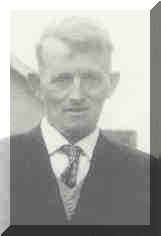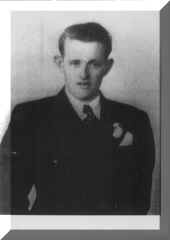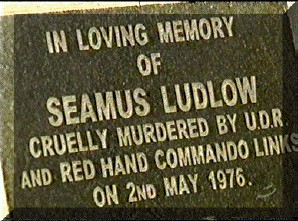The Murder of Seamus Ludlow in County Louth, May 1976. Towards a public inquiry?



The Murder of Seamus Ludlow in County Louth, May 1976. Towards a public inquiry?
|
|
Introduction to the murder of Seamus Ludlow and the official cover-up. Michael Cunningham investigation - 1978 The recent Campaign for Truth and Justice. Irish Victims Commission Report. Ludlow family's questions for the RUC (now the PSNI). Jim J. Kane's letter to the N I Human Rights Commission. Jim J. Kane's letter to the RUC Ludlow Family Letter to Bertie Ahern Other Ludlow Family Sites. |
The Newry Democrat, 17 February 1999: Public meeting to call for inquiry into the Seamus Ludlow murder A public meeting about the murder of Seamus Ludlow in May 1976 is to be held in Dundalk Town Hall on Thursday, February 18, at 8.00 pm. Relatives of the deceased Dundalk man organised the meeting to "inform the public about the orchestrated disinformation surrounding gardai investigations into the case and ensure support for calls for a public inquiry." Seamus Ludlow, a 47-year-old forestry worker, was found shot dead in an isolated laneway two miles north of Dundalk in May 1976, and his death became one of the unsolved mysteries of the Troubles. The public meeting will also act as a forum for the launch of a report about the investigations into his death, compiled by human rights group, British Irish Rights Watch. Mr Ludlow's nephew, Michael Donegan from Dromintee, said, "We ant to do two things; let the people of the area where Seamus lived and died know what we know; which is quite a lot. "Gardai have told us quite a lot, but have told the public nothing. They seem to be waiting for the Northern Ireland DPP to decide whether or not to prosecute. "This case could well be pivotal in opening other cases, as the same people who investigated it, also investigated other murder cases, notably the Dublin and Monaghan bombings of 1974. "Gardai have sat on information about Seamus' death since 1979, if not from '76. "For all those years, my family was lied to; told that very little was known about the death. "In fact, we now know that the information they had compiled ran into several volumes. There was a massive amount of information.." he added. Mr Donegan said that the meeting will raise questions about why Gardai allegedly found it necessary to smear the innocent man. "not one loyalist or soldier has been arrested in connection with murders south of the border," he said. "So, who were Gardai trying to protect if not the killers? Someone in the Department of Justice or the government of the time?" Mr Donegan also claims that the case has been politicised, and that Paul Hosking, who admitted, in 1987, his presence at the murder scene, was told not to say anything about it, as it was 'political'." Questioned by Army He said that the RUC had not questioned any member of his family until the last six months, but at the time, "considerable interest" was shown by the British Army. "My father was taken by helicopter to Bessbrook army barracks in 1976 and interrogated about Seamus Ludlow by an intelligence officer. "And soldiers visited my mother, Seamus' sister, at her home after the murder, making insulting remarks about the dead man," he said. "Authorities in both the north and the south have been tightlipped about the case. However a public inquiry does not depend on prosecutions to take place. "We want an inquiry which can be seen to be independent and uncompromised, with no restrictions in terms of reference." A press conference will also be held in Dublin's Buswell's Hotel, Molesworth St at 2.00 pm on the same day as the Dundalk meeting. The Ludlow family will be accompanied by Jane Winter, Director of British Irish Rights Watch, who wrote the controversial report. Chairing the Dundalk meeting will be Monsignor Raymond Murray, a respected Northern Ireland civil rights campaigner, who first published a report Mr Donegan's interrogation in Bessbrook, in his book "SAS in Ireland", written in 1989. The meeting will also be attended by representatives of the Irish Council for Civil Liberties and the Pat Finucane Centre in Derry. Mr Michael Donegan said the Ludlow case is unique in that it is virtually the only major Irish civil rights case which is making any progress, and it takes on two systems at once, that of Northern Ireland and the Republic of Ireland.
I Homepage I I Top I I Press Coverage I I BIRW Report. I |